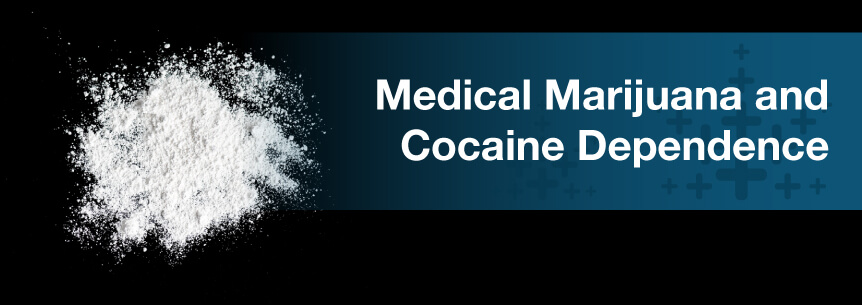
As scientists continue to research the effects of medical marijuana on the body, new evidence is being discovered that reinforces the notion that the chemical compounds found in the cannabis plant can be used to manage and treat a variety of physical and cognitive health conditions. Current common uses for medical marijuana include treatment of nausea, chronic pain, muscle spasms, insomnia, cancer, HIV, glaucoma and other serious illnesses. There is speculation that medical marijuana can also be used to treat the symptoms of drug addictions like cocaine dependence.
The cannabis plant and coca plant have been cultivated for thousands of years, with marijuana and cocaine specifically being used for medicinal purposes over the last few centuries. In the early 1900s, the sale, possession and recreational use of both substances and their analogous forms were deemed illegal by the federal government. Since then, cocaine use in Americans has increased, and many people seek treatment options to help overcome their dependency. Although there are many potential pharmacological and existing behavioral intervention options, cannabis may provide additional therapeutic benefits.
Medical marijuana may be an effective alternative treatment option for those struggling with a cocaine dependency. Ironically, this is a unique case of a substance classified by the United States Drug Enforcement Administration as a Schedule I drug having a medicinal application in the treatment of dependency on Schedule II drug. Fortunately, medical marijuana has been legalized in the majority of states and physicians could potentially recommend medical-grade weed to those who are struggling to overcome the symptoms associated with cocaine dependence.
Made from the leaves of the South American coca plant, cocaine is a powerfully addictive stimulant. It does have use in some medical applications which health care providers have deemed appropriate, however, the most frequent intake of cocaine is through recreational usage. This street drug is often mixed with other synthetic drugs which could increase its rate of addiction. Overdoses can occur from natural and tampered cocaine even during the initial use. Long-term use of this substance can impact brain functioning and lead to dependence and addiction.
Although the terms may be used interchangeably by some, there is a difference between physical dependence and addiction. When an individual becomes addicted to a substance, they are unable to resist their compulsion to use it despite the harmful consequences it has on all aspects of their health and wellbeing. A drug dependence often accompanies addiction and occurs when the body adapts to the substance on a physical level. The body needs increased dosages to achieve desired effects, and its absence can cause physical and mental symptoms.
Cocaine is also referred to as snow, blow, coke, powder or C. One form of cocaine, hydrochloride salt, is a water-soluble powder that is injected or snorted. Cocaine is also available in a water-insoluble base form, also known as crack cocaine, which is processed with baking soda or ammonia and has its hydrochloride removed to create a substance that can be smoked. The long-term use of both forms can lead to a cocaine dependence that may require medical intervention to overcome.
This drug causes the brain to release certain chemicals at much higher potencies than normal, creating a sense of euphoria in the user that can be addictive. When usage stops, a crash follows which creates an urge to immediately use more. Those who have frequently used cocaine may attempt to decrease their usage or quit taking the substance completely. This could result in the individual experiencing cocaine withdrawal — even if there is still a small amount of the drug still in their bloodstream.
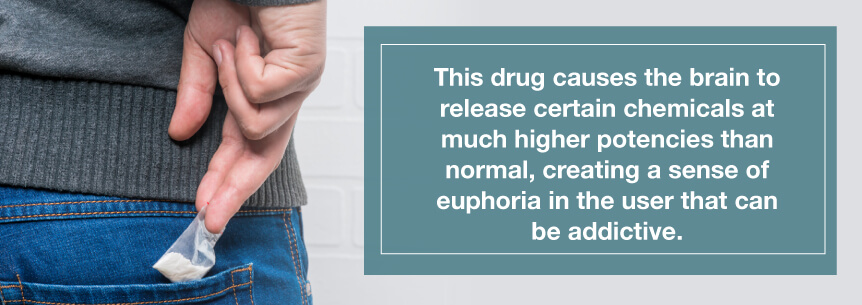
Cocaine withdrawal symptoms can include:
Dependence and addiction are not simple health conditions. They are actually highly complex diseases that stem from a variety of social, biological and genetic factors. Drug dependency could be caused by a genetic predisposition to addiction, social pressures to use, mental health disorders that a mind-altering substance may seem to treat or other factors.
It is not rare for an individual to develop a dual diagnosis of a mental disorder and a substance abuse disorder. The estimation of men and women struggling with these conditions simultaneously reaches nearly 8 million in the United States. Either of these co-occurring disorders can develop first and lead to the other. Some individuals with afflictions like depression, anxiety, bipolar disorder or PTSD may turn to cocaine to find relief from their struggles. Through continued use of any form of cocaine, they may develop a dependency.
Even though an individual may choose to use cocaine to attempt to treat their physical or emotional health conditions, they can develop a dependence on the drug unwillingly. It is believed that as much as half of an individual’s potential to develop a substance abuse disorder is linked to various genetic factors.
Rarely is any drug, medicinal or otherwise, free from potential side effects. Each health condition is as unique as the biology of the body that is suffering. Because of these factors, cocaine dependence can affect one individual in ways that are different than other individual’s results. Even a one-time cocaine binge could result in unfavorable effects like severe paranoia or hallucinations. Short and long-term effects may differ but tend to affect the individual on physical and psychological levels.
Short-term effects from cocaine dependence could include an increase in alertness and a hypersensitivity to lights, sounds or visual stimuli. It could also cause an individual to feel emotions on both ends of the spectrum, from irritability and bizarre or violent behavior to extreme happiness and increased energy. Physiologically, it could cause restlessness and muscle twitches, nausea, quickening or irregular heartbeat, dilated pupils and constricted blood vessels. Many of these effects are felt within as long as an hour and as short as a few minutes.
Short-term effects will disappear rather quickly though — sometimes within the half hour. Long-term effects, however, can have permanent results. Snorting coke can cause a loss of smell while cocaine ingested orally could result in severe bowel decay. Smoking crack can cause asthma and other respiratory issues. The use of needles during injection increases the risk of contracting serious bloodborne infections or diseases like HIV and hepatitis C.
The crack epidemic of the 1980s and the continued prevalence of cocaine and crack cocaine in society has caused widespread devastation to communities throughout the country. Statistics show that although the abuse of cocaine has not yet reached the same stratospheric levels as opioids, it should still be considered a significant public health issue.
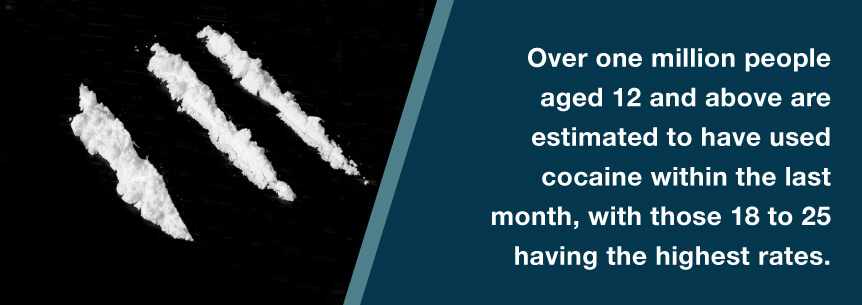
Although cocaine use has seemed to be on a decline over the last few years, it still continues to negatively impact millions of lives. It is critical that those suffering from a cocaine dependence have access to treatment options that will assist them in finding long-term recovery.
Behavioral interventions like rehabilitation and therapeutic treatments are frequently used to treat those dealing with cocaine dependence. Methods like cognitive-behavioral therapy and contingency management are considered effective options that often yield positive results. Although these practices are beneficial, it shouldn’t be forgotten that each individual struggling with cocaine dependence requires thorough treatment that is targeted to all of their needs. This includes simultaneous treatment for other substances that they may be using, as well as any other co-occurring disorders they may be faced with.
As of now, there are no pharmacological approaches that include the use of other medications to treat cocaine dependence. The FDA has not yet found any medication that they deem to be a safe and effective treatment option for this condition. However, one study concluded that some substances could improve symptoms of drug craving and dysphoria during the cocaine withdrawal period. These drugs include lithium, dopaminergic agonists and potentially even other stimulants. More research and governmental approval are required before these options become available to patients experiencing cocaine dependence.
With so many diverse applications, it comes as no surprise that cannabis can be useful in treating those with substance abuse, dependence and addiction issues. In fact, many of the side effects of cocaine use and symptoms of cocaine withdrawal are actually those which medical marijuana is frequently used to treat. Depending on the strain, medical marijuana compounds may alleviate many physical and psychological symptoms. A few of the side effects that various cannabinoid strains can provide relief from include nausea, depression, fatigue and insomnia.
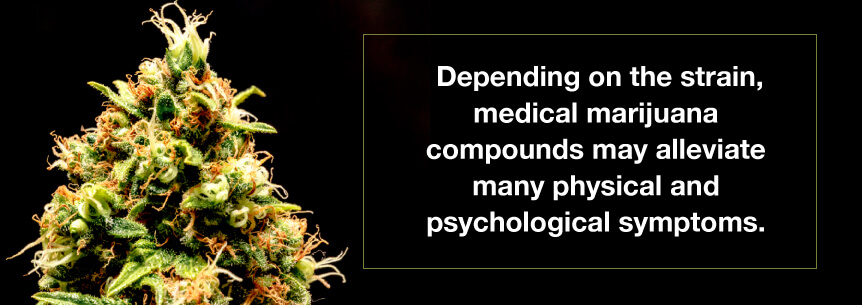
As with any medication, not every strain of medical marijuana is going to be an ideal treatment solution for every case. Individuals battling cocaine dependence may experience a range of symptoms during or after their withdrawal period. While some forms of substance abuse treatment medication are only available in limited forms, medical marijuana is available in a variety of strains that may relieve you of your symptoms. With varying THC and CBD potencies, each strain may target particular symptoms. Some strains to try for cocaine dependence treatment include:
There are many other medical marijuana strains available that may help treat your unique cocaine dependence symptoms. For the best advice, speak with a dispensary staff member or contact a medical marijuana doctor in your area.
One of the many challenges patients face is the delivery of their medication. For instance, some medications may only be ingested by swallowing a pill or liquid. Thankfully, medical marijuana is available in a number of forms which can cater to the health or lifestyle needs of particular individuals. The varieties of cannabis intake include inhalation, edibles, sublingual drops or strips, concentrates, topical and transdermal applications.
Perhaps the most commonly known way of using cannabis is through inhalation. Cannabis can be smoked via a number of devices including:
In addition to inhalation, edibles have become another increasingly popular way to ingest marijuana. Edibles may be an option for those that do not enjoy inhalation and seek to ingest medical marijuana conveniently. Available in a variety of forms, edibles have a delayed onset which means effects will not be felt as quickly as they would through smoking or vaping. It’s also possible to purchase cannabinoid-infused oils that can be used as an ingredient in home-made edibles. The many types of edibles include:
Cannabis oil can also be used to create sublingual drops or strips that dissolve under your tongue. This method of marijuana ingestion may be ideal for those who may need to take their medicine during times which are otherwise inconvenient for methods like smoking, eating edibles or dabbing. Some forms of these sublingual substances are flavored and are available in lower concentrations.
There are also marijuana concentrates which have a much higher potency than some other forms like edibles or sublingual drops. THC is extracted from the cannabis and can be made into a variety of concentrates depending on the extraction process used. Many people refer to this practice of cannabis usage as “dabbing.” Some of the concentrates available are:
Topical forms of medical marijuana can be used similarly to other health and beauty products that are applied directly to the skin. Massaged into the face, body, hair and lips, there are many types of topical cannabis which include:
Similar to birth control or nicotine patches, cannabis-infused patches release controlled amounts of medical marijuana over time. This could be an ideal solution for those who may be unable to ingest marijuana in the ways above. Whether their schedule is too busy to accommodate a topical solution or if they are suffering from a health condition that makes it difficult for them to chew, swallow or inhale, transdermal patches offer an easy alternative for medical marijuana intake.
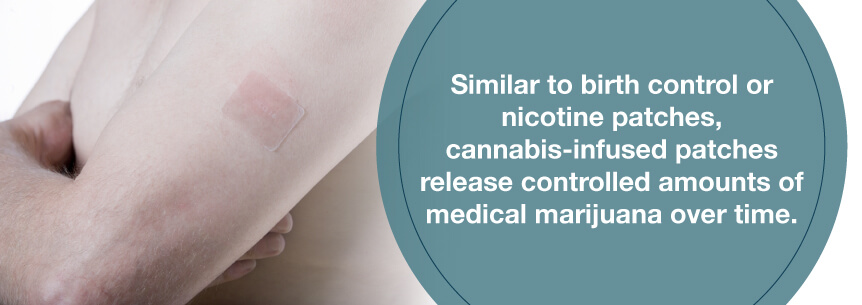
Cocaine in all of its forms is a powerful stimulant that alters brain chemistry and creates a sense of euphoria in users. Unfortunately, continued use of this substance can result in an uncontrollable compulsion to constantly use the drug. Cocaine dependence is a serious health condition that negatively impacts the lives of many throughout our country. Fortunately, in combination with other targeted treatment programs, medical marijuana may offer cocaine-dependent individuals relief from their symptoms of withdrawal.
Cannabis has been used for millennia to treat a variety of health conditions. For more information about the potential applications of medical marijuana, subscribe to the MarijuanaDoctors.com newsletter. If you or someone you know is struggling with cocaine dependence and is considering medical marijuana treatment options, search for a local cannabis doctor in your area.
Find A Doctor Find A Dispensary